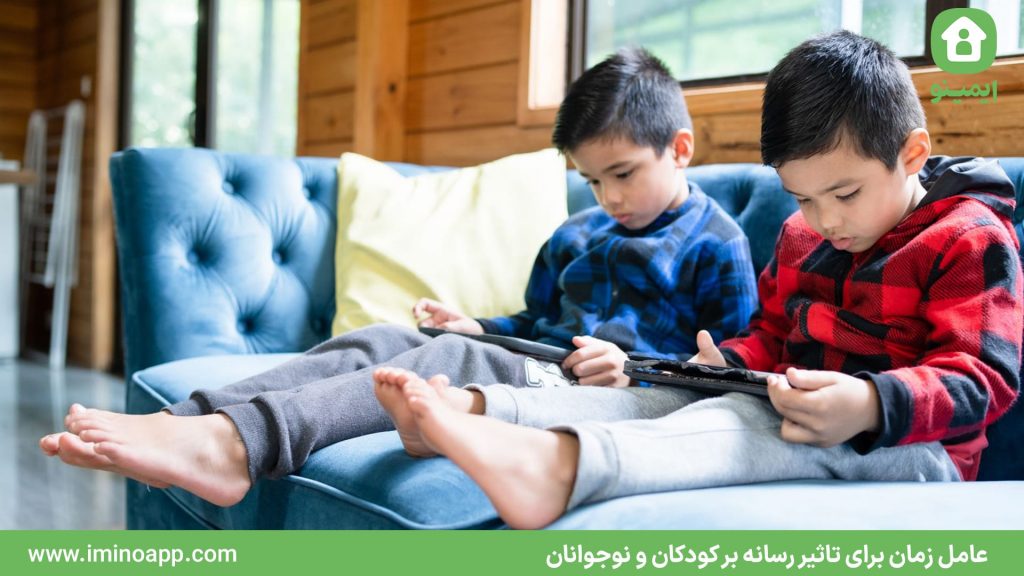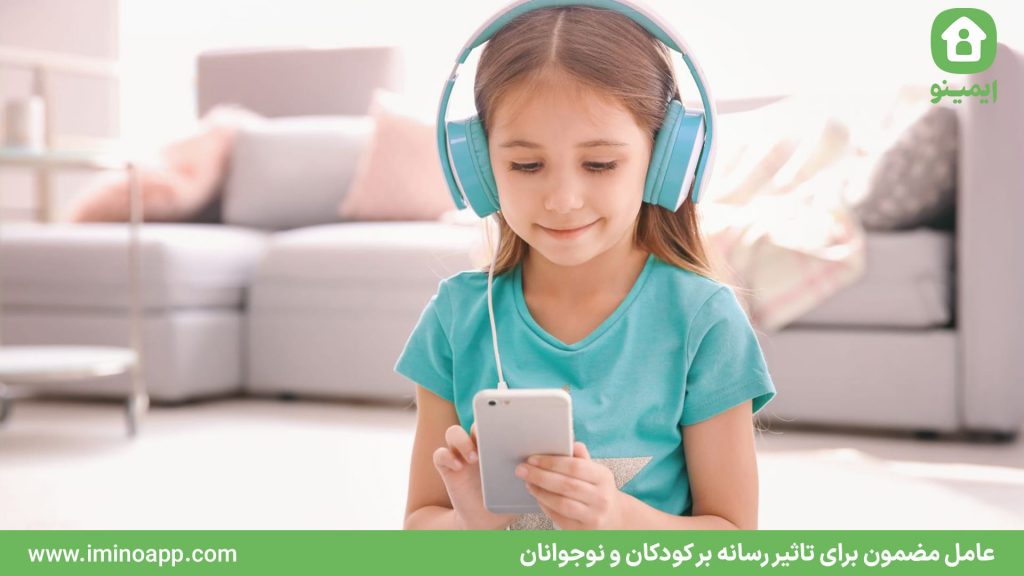Time, Age, and Theme; Three Primary Indicators for Monitoring Your Child’s Media Consumption!
Children, due to their limited cultural experience and greater sense of connection with media content, are typically more attracted to media messages than other age groups and become, so to speak, immersed in the dazzling colors, images, and sounds of media. They can also empathize and identify with media messages more than others, consequently experiencing deeper and more intense mental engagement.
Learn More: A Way to Overcome the Potential Harms of Watching Cartoons for Children
Media Consumption by Children and Adolescents
For this reason, media consumption by children and adolescents is generally not limited to watching their favorite animations or cartoons, and subsequent reflection and imagination about characters, storylines, dialogues, and displayed scenes become the foundation of their mental activities and storytelling for a long time.
Given such far-reaching effects, watching television or consuming media content by children and adolescents certainly requires special considerations compared to adults, and the general age-rating guidelines for adults cannot be deemed effective or advisable for this group without modification.
This is particularly true because, through the various stages of growth that children undergo from birth to young adulthood, every external stimulus, including media messages, can have a long-term and even irreversible impact on their nerves, thinking abilities, and creativity.
Therefore, it is essential that media consumption at these ages be carefully and meticulously monitored by dear parents and others, including relatives, acquaintances, and educators, to minimize potential harms and adverse effects.
Learn More: The Correct Way to Manage Children’s Phones That Parents Should Know!!

Special Characteristics of Media Consumption for Children and Adolescents
With these explanations, in the following article, we aim to focus on the special characteristics of media consumption for children and adolescents and explain three specific indicators for managing media consumption in this age group.
These indicators, although they may not initially seem significant to parents, will undoubtedly have consequences that are a priority and of importance to all caring parents.
Learn More: The Most Important Tips for Teaching Media Literacy to Parents in the Current Era

A) The Time Factor in Media Impact on Children and Adolescents
One of the most important factors regarding media consumption by children and adolescents, which may receive less attention from parents due to frequent repetition or the necessities of urban life, is the amount of media consumption by children in this age group.
In other words, although other factors can also contribute to the emergence of negative mental and educational outcomes from media consumption, the factor of time, or in other words, the limit of media message consumption by children and adolescents, cannot be overlooked.
To elaborate, children generally have less analytical ability for media messages. This low capacity, when combined with a large volume of messages, leading to what is termed “information overload[1],” results in a kind of mental disturbance and confusion in the child.
This situation becomes particularly pronounced when we consider that children and adolescents in this age range experience the most critical stages of brain and mental development, and the consequences of such experiences can remain with them for years, if not for a lifetime.
Therefore, it is essential that parents, educators, and all those who interact with this age group prioritize managing media consumption time and creating a form of restraint against excessive exposure to media messages.
Parental control software significantly assists parents and educators in this regard, regulating the amount of media consumption by children and adolescents.
Conscious use of such programs also helps parents, without direct intervention or confrontation with their children, to indirectly manage the duration of exposure to media messages through these monitoring tools.

B) The Age Factor in Media Impact on Children and Adolescents
Another primary and significant indicator in media consumption by children and adolescents is ensuring age-appropriate content. This indicator, commonly known as content age rating, helps parents have an easier path in monitoring and selecting appropriate media content for their children.
According to this rating system, content that is violent, sexual, frightening, or similar is typically restricted due to its potential negative consequences for children.
However, it should be noted that due to the contextual nature of social norms, these indicators and their application vary for audiences of the same age. For example, the rating of ethical or low-risk content for an Iranian child and a Dutch child will differ because the social, cultural, and consequently, the values and norms of these two children have significant differences, requiring two localized and personalized content rating systems.
Thus, it is essential that parents, while using various monitoring and parental assistant software that provide age ratings, pay attention to the cultural context of these ratings and preferably use software that aligns more closely with their cultural and ethical norms and those of their society to protect their children from the potential harms of conflicting or contradictory indicators with their cultural and social patterns.

C) The Theme Factor in Media Impact on Children and Adolescents
The third influential factor in the media education of children is the themes present in the consumed media content. In other words, while monitoring the duration of media consumption and ensuring age-appropriate content can significantly reduce the negative physical and psychological consequences of improper media use, these necessary measures are by no means sufficient to provide complete protection for children.
To this end, we will address the third fundamental indicator in parental management and supervision of media consumption by children and adolescents, which is the factor of themes.
Based on this factor, it is necessary for parents to monitor the themes and content of the media consumed by their children alongside managing duration and age-appropriateness, and at the very least, recognize the basic principle that every piece of content is created with a specific purpose, and no media content is devoid of goals or intentions.
To clarify this indicator, let us provide an example: suppose your five-year-old child is exposed to multimedia content for less than two hours a day, and local monitoring software has confirmed the age-appropriateness of the content for your beloved child.
However, the child’s fascination with a specific type of media production (anime, animation, live-action, silent, sci-fi, adventure, etc.) creates a particular semantic world centered around those themes of interest. Since initial experiences typically have a high degree of influence on children’s minds and psyches, distancing the child from this specific media theme will not be easy.
This issue, combined with algorithmic life and the repetitive recommendations of content platforms, can have long-term negative effects on the child’s psyche and may lead to a one-dimensional personality engrossed in one of these themes.
Furthermore, paying attention to the creators’ intentions and controlling anything outside the desired educational framework of parents, even in media such as the Puya and Nahal networks, falls within the application of this thematic indicator. This once again highlights the importance of personalized and direct parental supervision of children’s media consumption and education.
With these explanations, it is recommended that parents, while maintaining close and continuous communication with their children and utilizing local parental control software such as “Imino,” which offers significant features for managing media consumption, directly engage with their children and take charge of their media education.
This is because relying on any monitoring tools does not exempt parents from the serious responsibility of directly supervising the content and themes consumed by their beloved children and adolescents.
Based on this, three primary principles were briefly introduced: attention to consumption duration, age-appropriateness of content, and management of themes while avoiding entrapment in algorithms and repetitive recommendations in a single genre or theme, which are increasingly threatening due to the capabilities of artificial intelligence. These were presented as practical solutions for caring and concerned parents.

[1] Information overload